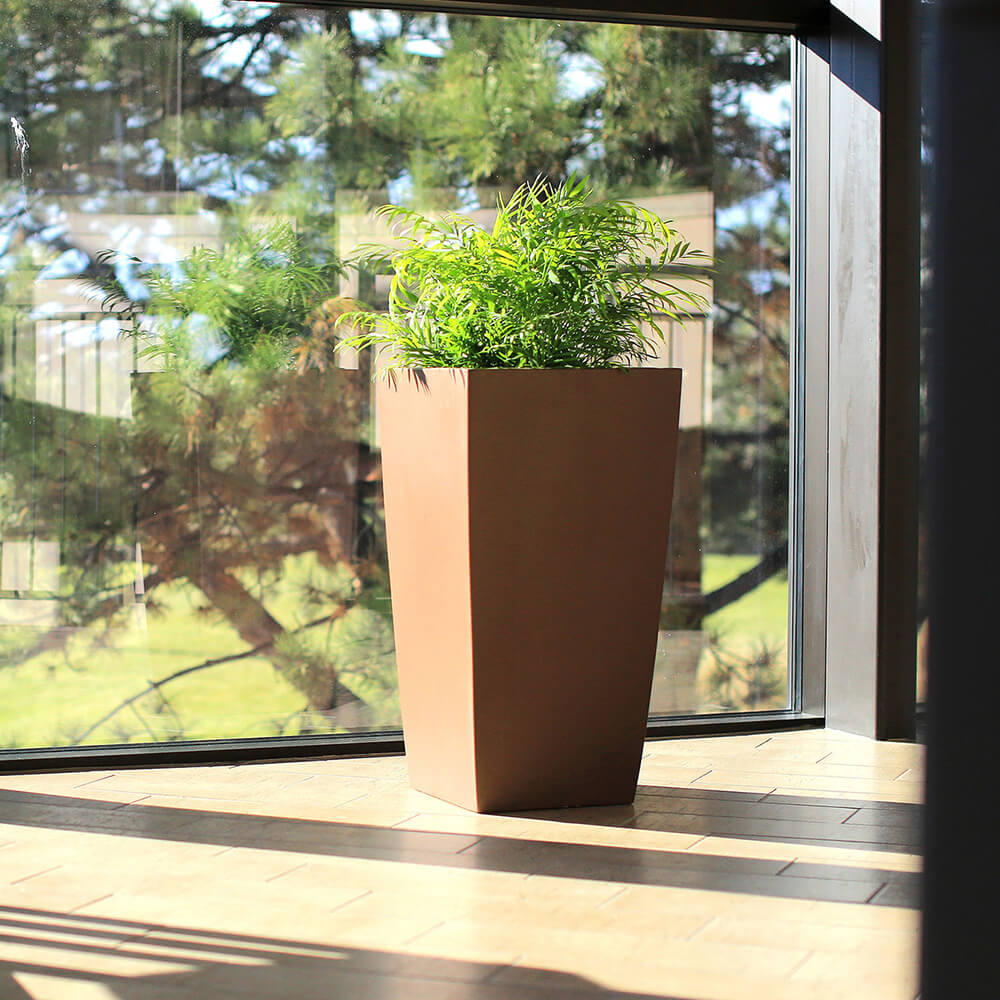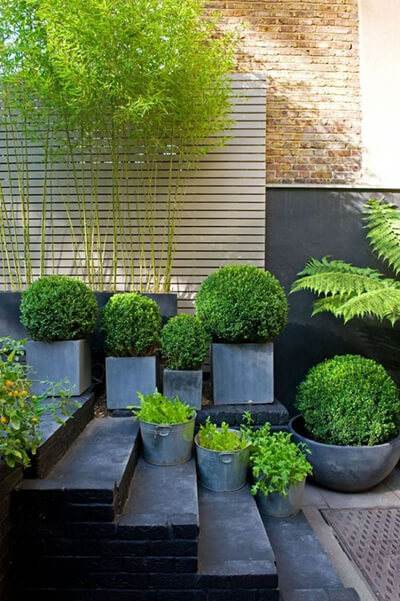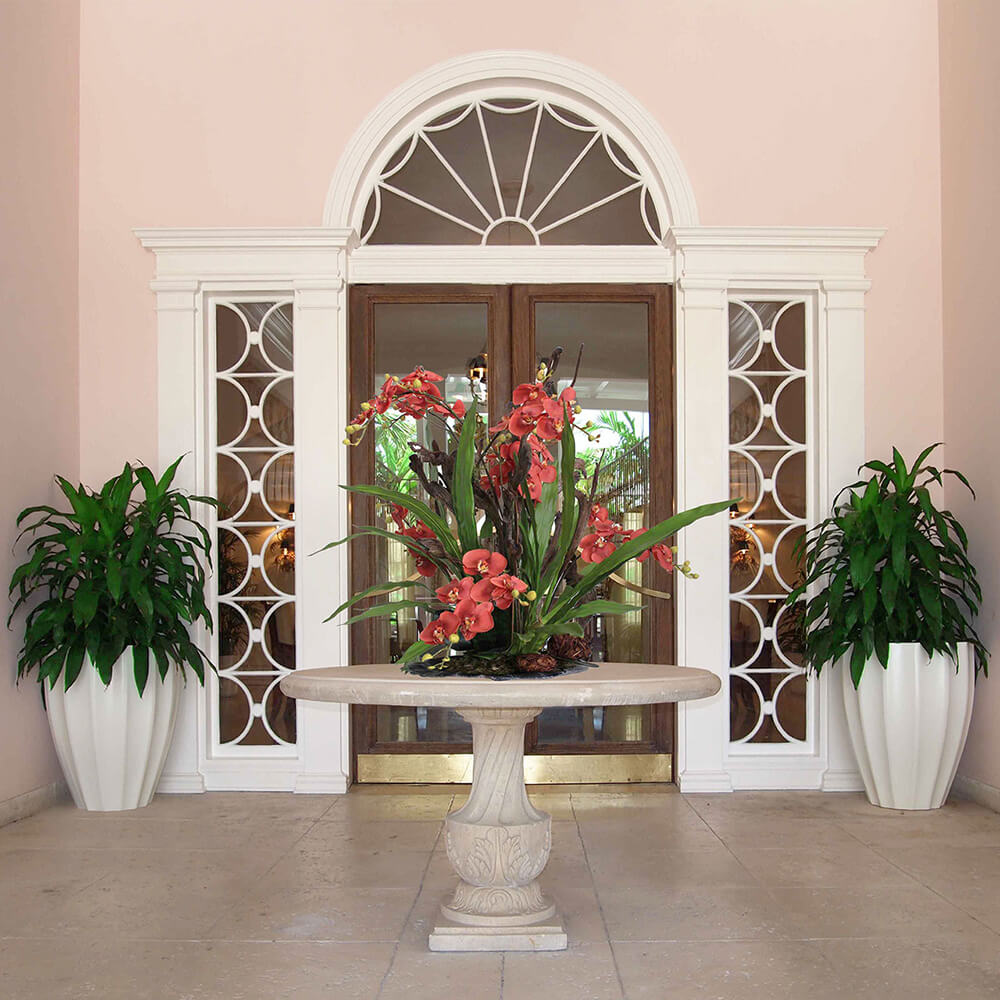Growing Boxwood in a Planter: What You Need to Know
Posted by Jason Wyrwicz on Jun 13th 2024
Thanks to its evergreen leaves, boxwood is popular in the landscaping industry. It can help produce a beautiful image throughout the year in your garden or living area.
But you can make these plants shine even more, especially when you're growing them in planters. This article will examine the best ways to grow boxwood in a planter. We'll also give you handy tips and look at planters that make your boxwood plant stand out.
Why Grow Boxwood in a Planter or Container
Boxwood has ideal foliage for shaping, making it a favorite hedge plant since ancient times. Some reports state that the Egyptians grew it as early as 4,000 BC.
These plants have also been popular for generations in French and English gardens, where garden areas are as much of a focal point as the homes themselves.
Apart from its uniquely shapeable leaves, the boxwood is also popular for this purpose because it's easy to keep relatively small. If you wish to grow it to enormous heights and create more of a privacy wall, you can easily do that. However, you can also grow it in more of a bonsai style. This is beneficial for use as a centerpiece for tables or just a way of subdividing a room into individualized spaces.
Finally, when you grow boxwood in a planter, you can easily move the entire planter with the shrub from one place to another if necessary.
Landscaping Ideas for Growing Boxwood in a Planter
Using Boxwood Planters to Accentuate Entrances
Using boxwood in a planter is an option if you're trying to elevate and accentuate your property's entrances. With their vibrant greenery, the different shapes that you can sculpt them into, and even the aesthetic aspect of the planters themselves, there is so much you can do to take your doorways or entrances to a whole new level.
This standard entranceway shrubbery is just one example of how boxwood can enhance an entrance.

PC: Nikki Carr on Pinterest
Here’s another example, this time using topiaries to elevate the doorway’s aesthetics.

PC: Foter Design Ideas on Pinterest
Planter Suggestion
When employing boxwood in a planter as an accent feature around a doorway, there are many excellent planters to choose from. One outstanding example is the Milano Narrow Planter Box.

This planter has a sleek but tall design, allowing you to fully utilize the height of your boxwood without taking up too much space.
The Wannsee Large Round Tree Planter is an ideal fit if you want to go for something more traditional. It will give you a pop of color while still fitting comfortably next to your entrances.

Using Boxwood In A Planter As A Centerpiece For A Room Or Tabletop
Thanks to its adaptability and the fact that you can keep these plants reasonably small, another advantage of the boxwood is that you can quickly grow and shape it into a small shrub that can be used as a centerpiece. Whether you place the planter in the middle of your table as a table centerpiece or a larger version in the middle of a room to create a focal point around which you can build the rest of the room, using boxwood in a planter is ideal.

PC: Unique Pastiche Events on Pinterest

PC: Life in Bloom on Pinterest
Planter Suggestion
When using a planter as a centerpiece, you want to ensure it's neither too big nor too tall. The Tabletop & Windowbox Collection is an excellent example of this. While it's narrow, it offers plenty of length for making a diverse and attractive planter.

The Short Hayden Tabletop Planter Pot is another excellent option, though it is round rather than square or rectangular.

Using Boxwood in a Planter to Divide Outdoor Spaces
Just as you would use in-ground hedges to help subdivide outdoor areas, you can use boxwood in a planter to create the same effect. Naturally, the planters would be considerably larger, And you would allow the boxwood to grow much bigger than you would for smaller planters.
The great thing about using boxwood in a planter instead of an in-ground shrubbery or other type of hedge is that you can constantly reorganize your outdoor areas by moving the planter to a new location.
Thanks to the vibrant greenery of the plants themselves and the beauty of the planters, this type of outdoor subdivision will always maintain the overall appearance you're trying to create.

PC: Outdoors Lifestyle on Pinterest

PC: Red Hot Plants on Pinterest
Planter Suggestion
When using boxwood in a planter outdoors, you generally have different space constraints than indoors. In these cases, options like the Badalona Planter Box and Modern Rectangular Planter are ideal. They give you as much length and height as you need.


Experiment with Topiaries
A topiary is created when you sculpt and trim a shrub or tree into a specific shape as an ornamental feature. Boxwoods have been used as topiaries for decades, if not centuries, thanks to their unique suitability for landscaping.
In part, this is due to the boxwood's intensely full foliage. Additionally, these plants are essentially evergreen. For these reasons, you'll never have a season in the year when your topiaries do not look lush and full.
The advantage of creating topiaries out of boxwood in a planter or container is that you can easily move your visual element from one place to another to create an effect.
The thing most people think about when they hear about a topiary is the classic ball or lollipop-shaped shrub. However, many other shapes exist, including cones, triangles, squares, and even stars. The only limits are your imagination and ability to shape your boxwood plant successfully.

PC: Deavita.net on Pinterest

PC: The Home Depot on Pinterest
Planter Suggestion
With topiaries, there are so many different ways that you can use planters to significant effect. Using shaped planters can be incredibly effective, so here are some of our favorite recommendations.
The Rio Grande Modern Cylinder Planter Pot is a round planter with plenty of height, adding to the topiary's effect.

The Lima Tapered Square Planter is short and squat, making it ideal for your classic ball-shaped topiaries.

The Corry Tall Cylinder Planter Pot is very high, offering great contrast when placed next to shorter planters.

If you want the height, without the round shape, then the Toulan Tapered Tall Square Planter will give you the effect that you want.

Use Boxwood in a Planter to Enhance Curb Appeal
Like many other decorative uses, a boxwood in a container or planter is ideal for curb appeal because it's easy to move from one place to another.
Certain places in an establishment's vicinity are often more difficult to landscape. Whether it's an out-of-the-way region that needs beautifying or where the ground is too hard to facilitate traditional landscaping options, this type of planter-bound boxwood allows you to make the most of those regions.
Whether it's using topiaries, planter-based hedgerows, or simply an array of neat boxwood shrubs, there's something to be said for using these plants to enhance curb appeal.

PC: Pinterest User

PC: Gardening Soul on Pinterest
Planter Suggestion
You can use almost any planter you like for curb appeal, from square to circle or even triangular. There's no wrong planter for your boxwood.
Some of our suggestions include the sleek Alicante Tapered Fluted Plant Pot and the Tarragona Bowl Planter Pot.


Pro Tips About Caring for a Boxwood in a Planter
If you plant boxwood in a planter, you want to know how best to care for your new acquisition. In some circles, boxwoods are known to be somewhat demanding and difficult to care for. However, as with most plants, they're generally quite easy as long as you know how to care for them.
So, to help you care for your boxwood in its planter or container, we've compiled a list of some of our top tips.
Get the Soil Right
Boxwood plants are sensitive to soil conditions. If you want a boxwood in a planter to thrive, you must get the pH levels right. Their preferred range is between 6.8 and 7.5.
Choosing a planter with plenty of drainage is also important since boxwoods can't handle consistently wet roots (often known as wet feet).
Maintain the Correct Water Levels
Boxwoods can be incredibly susceptible to lack of water in the first few years of their lives. However, as mentioned earlier, these plants are also not fond of consistently having wet roots.
The best option is to water them regularly but not in extreme amounts, especially when the weather is hot or dry.
Prune at the Right Time
While boxwoods respond exceptionally well to pruning, it's important not to do this at the wrong time of year. For example, if you prune your boxwoods in late autumn, the plants are susceptible to winter burn.
It's best to do most of your pruning in spring, after the cold of winter has passed, or at the end of summer and the beginning of fall.
Ensure that the Plants Get Enough Feeding
When you grow boxwood in a planter, you must ensure the plants get sufficient nutrition. The best way to do this is to provide fertilizer regularly. Since boxwood is mainly grown for foliage, you can choose a nitrogen-rich fertilizer and follow the instructions on the packaging.
Repotting Your Boxwood
Unless you plant your boxwood in a very large planter, to begin with, you will need to repot your plant every year or two. Even if you keep the foliage portion of the tree quite small, the root ball will continue to grow. To accommodate this, you must trim the root ball and move the boxwood to a slightly larger planter.
Final Thoughts
Growing boxwood in a planter is definitely something worth considering. When paired with the right planters, it creates a sight worth beholding.
What are you waiting for? Try it for yourself.



